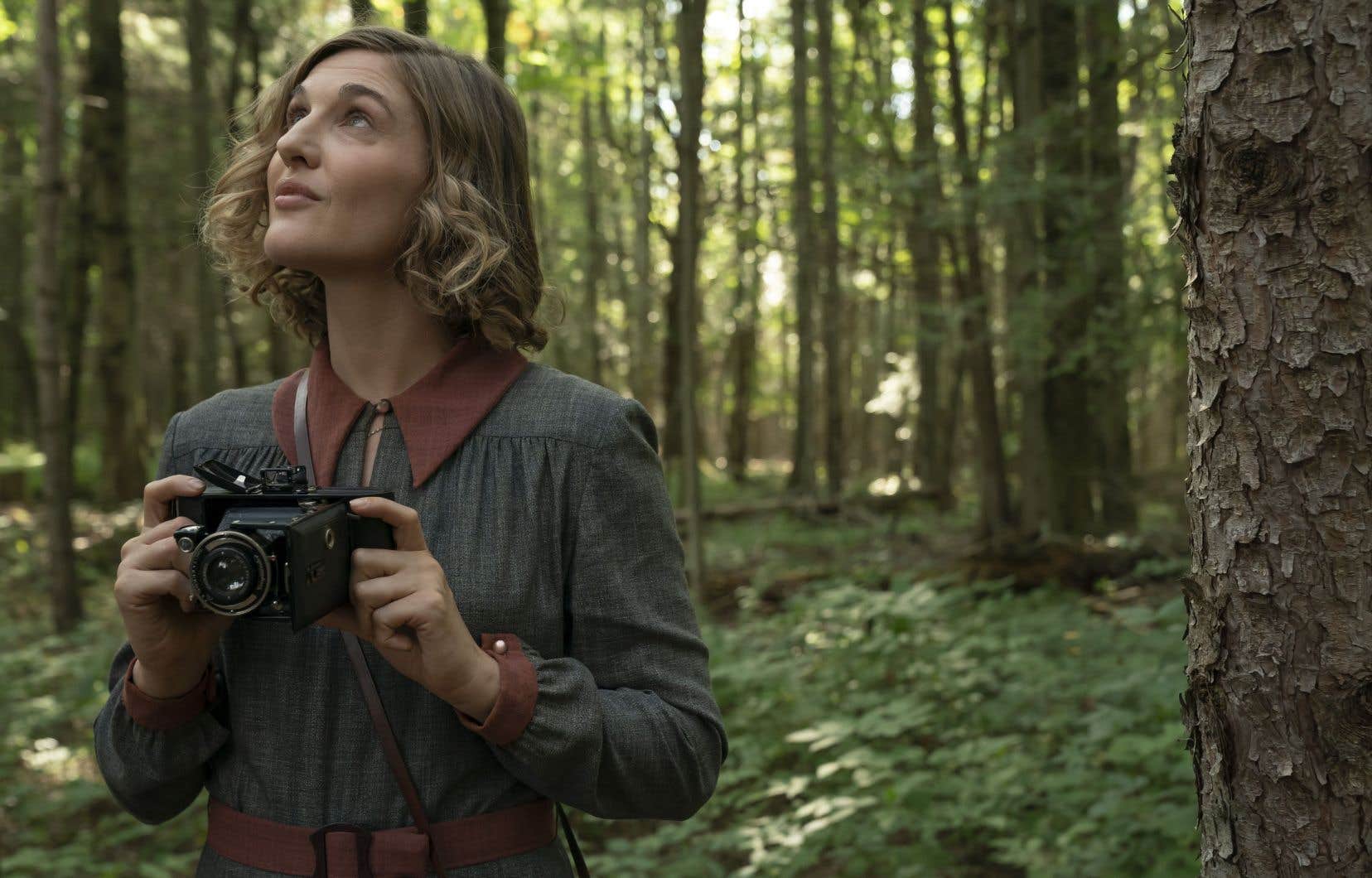In the 1930s, Brother Marie-Victorin, best known as the author of Laurentian flora (1935) and founder of the Montreal Botanical Garden, became friends with his student Marcelle Gauvreau. Fueled by an unconditional love for God and a boundless fascination with nature and science, their relationship will evolve into a passionate epistolary exchange, in which they explore human desires and sexuality, in its physical and psychological manifestations.
An unheard of correspondence in the puritan Quebec of the time, the letters exchanged by the two chaste lovers – those of Marie-Victorin were published in 2018 by Boréal, followed by those of Marcelle Gauvreau, in 2019 – tell the story first and foremost a love story as strange as it is beautiful, in addition to shedding new light on the erotic history and religious history of Quebec, as well as their heritage.
By diving into these exchanges, producer Roger Frappier knew that he had a film in which romance, eroticism, history and science would come together. To write and direct it, he thought of Lyne Charlebois, with whom he had collaborated on the feature film Borderline, 16 years earlier. She accepted without hesitation, even though she had not worked on the big screen since this first experience — “a question of circumstances”.
“I was immediately drawn to this tragic and impossible love story. I love the room Cyrano de Bergerac — to which I often refer in the film —, in which lovers manage to come together beyond incomprehension. Here, it’s the same. And then, I’ve never seen anyone talk about sexuality like that. It’s great poetry. »
A poetic puzzle
Armed with the two volumes of letters published by Boréal, Lyne Charlebois attempted to organize the different missives chronologically, to find what, in a passage from one collection, responded to the other. It was from this puzzle that she built her scenario. “I then tried to transpose their writings into dialogue, so that there were exchanges between the actors, and so that it was not just voiceover. I wanted to invent as little as possible, because their words already say everything. »
Appropriating, putting into words these writings of great poetry and great sensuality proved to be quite a challenge for the interpreters of the two lovers. “Reading the letters, I almost felt uncomfortable. I had the impression of reading someone’s diary, says Mylène Mackay, who portrays Marcelle Gauvreau; role she already played in the film The forgotten flowers (2019) by André Forcier. Then, you had to be able to say these words, intended for reading, while looking into your eyes. I don’t think I’ve ever talked so openly about my gender, my desires, and sexuality in general with someone. It was interesting to transcend this shyness to pay poetic homage to this language and this knowledge. I believe we have a lot to gain from it, collectively. »
Where has our desire for intimacy gone?
Despite the eminently romantic nature of the subject and her desire to respect the truth, Lyne Charlebois did not want to make a classic biographical film. She also did not want her project to become a pretext for a trial on religion and the power imbalances that it could create between a man and a woman. “I didn’t want us to judge this story with our today’s eyes, without being able to be critical of today’s times as well. » She therefore quickly thought of integrating into her story a more contemporary plot presented in the form of a mise en abyme.
Thus, within the film itself, Marie-Victorin and Marcelle Gauvreau are played by Antoine (Alexandre Goyette) and Roxanne (Mylène Mackay), two actors who are filming a feature film about the relationship between these two figures of botany . After having shared a passionate relationship before filming, the two actors are led, through the two characters they play, to question their own relationship to love and intimacy.
“What the film ultimately reveals is that when sexuality is not taboo, we enter into performance,” reflects Alexandre Goyette. We are no longer in intimacy, sensuality. Making love has become something that can be counted, something that can be achieved. The relationship between Marie-Victorin and Marcelle makes us want gentleness, slowness, and respect too. »
“I think there must have been a real excitement in waiting for these letters, so beautiful, thoughtful, erotic. Each word is chosen and weighed. We no longer value this connection. I don’t want to generalize, but sex has become a bit like a business, something to do on the to-do list. Then, we can no longer experience something without being interrupted, says Mylène Mackay, pointing at her playmate’s cell phone. They had this quality of presence which no longer exists today. »
Laurentian flora
Although the film mainly focuses on the relationship between the two friends until the death of the priest, it does not ignore the contributions of the latter and of Marcelle Gauvreau — the first woman to obtain a master’s degree in Quebec — to botanical sciences.
This love and curiosity towards nature are first and foremost highlighted by the exceptional photo direction of André Dufour, who manages to capture the most beautiful things about our territories, thereby reminding us of our collective ignorance to respect. “There was also extraordinary editing work. I think we had three hours of nature shots to sort through. We bought a small camera that we carried around when we were scouting, in Anticosti, in Bas-du-Fleuve, by bike on the mountain. We went to the Botanical Garden at different times to immortalize a flower that was growing at a specific moment. We were filming even when we weren’t filming. André really gave his 200%. If this film is not good, it is in any case very, very beautiful,” concludes Lyne Charlebois.
The film Tell me why things are so beautiful hits theaters on June 21.
